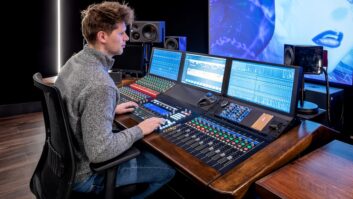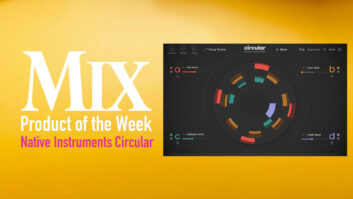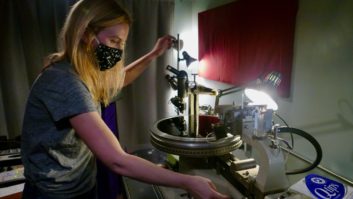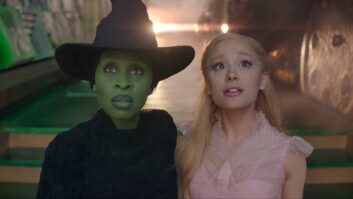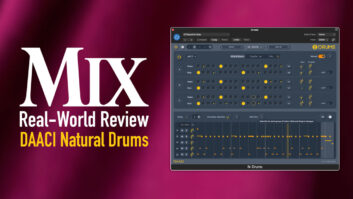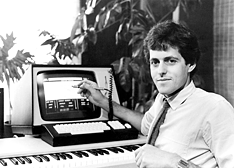
Kim Ryrie shows lightpen control of the CMI
Fairlight was founded in 1975 by Kim Ryrie and Peter Vogel, who were interested in using the newly available microprocessors to create digitally controlled synthesizers. Fairlight began shipping its revolutionary Series I CMI (Computer Musical Instrument) in 1979, with the first two units going to Peter Gabriel and Stevie Wonder.
Based on two 6800 processors, the CMI provided digital synthesis with a 6-octave keyboard, 8-note polyphony, two 8-inch floppy disk drives (one for the operating system, the other for archiving/library storage of sounds) and a whopping 208 KB of RAM. The system offered onscreen displays of waveforms, which could be modified via Fourier synthesis or simple light-pen redrawing of the waveform.
It also offered sampling, with the ability to pitch-shift sounds or make modifications via the CMI processor. An onboard sequencer stored note velocity information, and up to eight 8-bit audio outs were available for routing to a mixer or multitrack. Things can (and will) change over time. Now celebrating its 30th anniversary, the company’s latest generation of digital consoles integrate for 24-bit/96kHz DAWs and are based on a 240-channel, 72-bus QDC engine.
